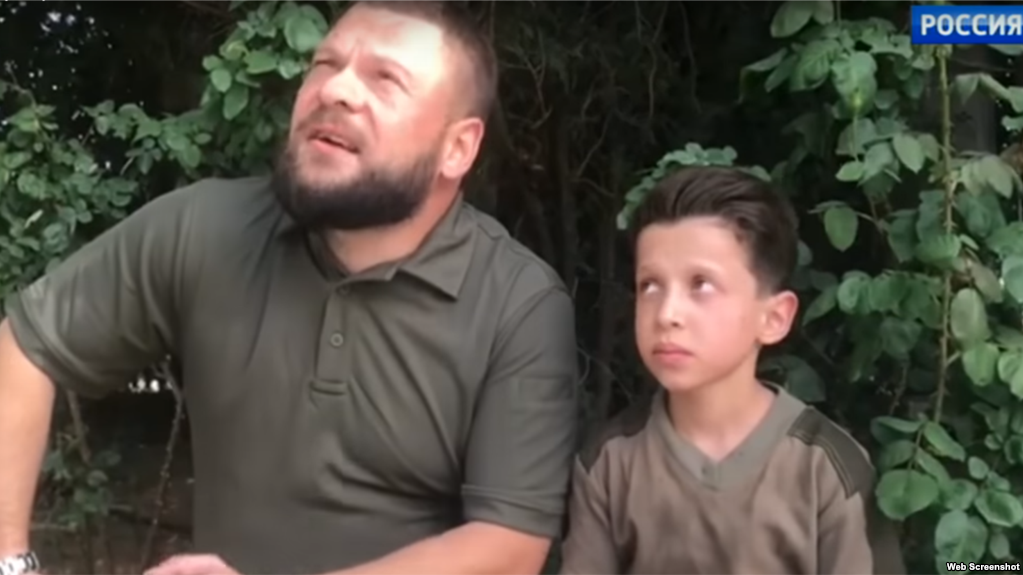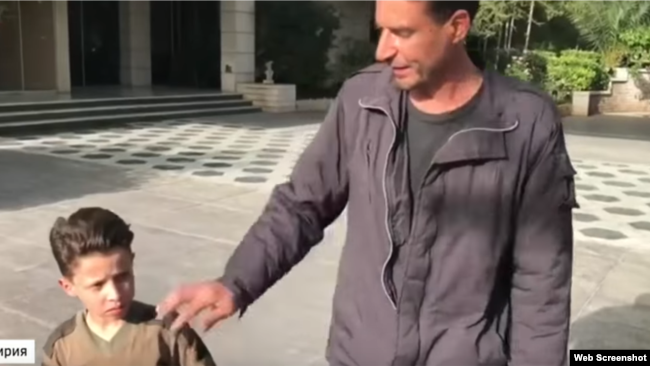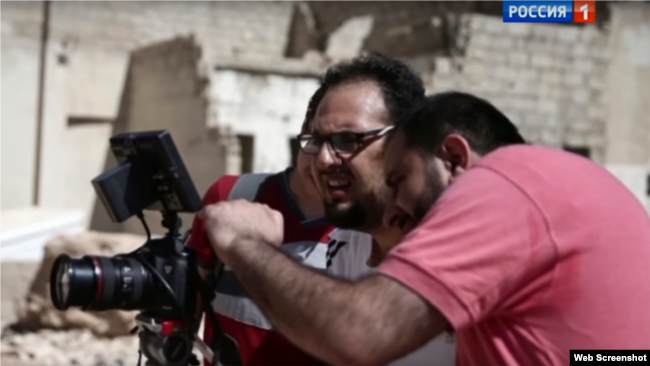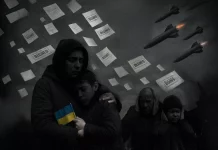
By Polygraph
“Literal information bombs! This week was a journalist’s godsend for our military correspondent in Syria, Evgeny Poddubnyy.”
FALSE
The Russian correspondent falsely claimed the interview was in Douma; it was in a military facility; Photos actually came from the set of a 2016 short film.
On April 22, Russian TV presenter Dmitry Kiselyov introduced his audience to an 11-year-old boy called Hassan Diab, who appeared in a video shortly after the alleged April 7 chemical attack in Douma, Syria. In that video, Diab is seen in a medical facility being drenched with water, ostensibly to cleanse any remnants of chlorine gas. The boy was later found by Russian correspondent Evgeny Poddubnyy, who conducted an interview in which the boy said that rescue workers staged the video of him in the hospital. That interview was widely promoted by Russian state media and Foreign Ministry officials.
Poddubnyy claimed the boy was not coerced in any way during his interview and that the interview had taken place in Douma. However, an investigation by The Intercept, the online news site founded following Edward Snowden’s 2013 revelations of NSA surveillance, determined that the interview had actually taken place on the grounds of a Syrian military establishment, specifically the Syrian Army Officers’ Club in Damascus.
Kiselyov’s program also included part of an interview with Fares Muhammad Mayas, described as an ex-fighter from the rebel group Jaysh-al-Islam (Army of Islam), which was fighting in Douma prior to the chemical attack. Mayas stated that groups like the White Helmets deliberately stage scenes of chemical and aerial bombing attacks. As he was speaking, Kiselyov’s program broadcast still photographs which appeared to show a film crew working in Syria.
In reality, the still shots came from Syrian film director Humam Husari, who was making a film dramatizing a chemical attack in Eastern Ghouta that took place in 2013. The stills date back to 2016, long before the recent chemical attack in Douma.






